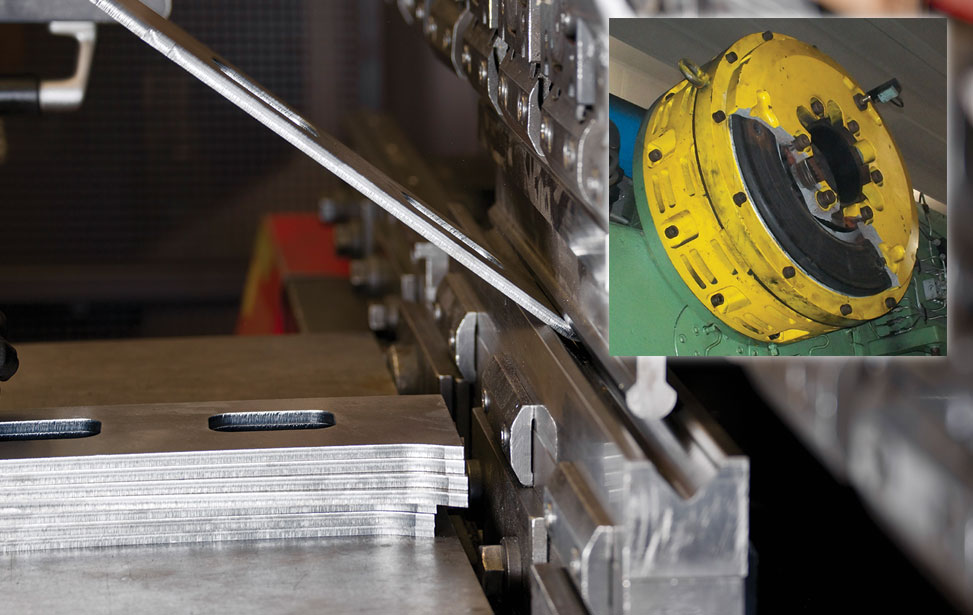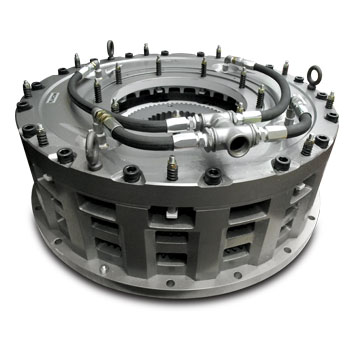Wichita Low Inertia Clutch for Brake Press

A metal forming facility had experienced a major problem on one of its bending brake presses. The air-tube holding plate of the clutch failed dramatically when a large piece of the steel plate cracked off. The resulting downtime was very costly for the high-volume production plant. The facility maintenance manager contacted Wichita Clutch for a more reliable replacement clutch so that the normal production schedule could be quickly resumed.
To meet the demanding brake press application requirements, Wichita Clutch provided a heavy-duty Low Inertia (LI) air-tube disc clutch. Wichita LI Clutches are ideal for use in high-cyclic applications. Units are specially designed for end-shaft mounting onto a bearing supported flywheel or gear wheel.
Wichita LI clutches are designed to be completely free from the effects of centrifugal force and self energization. Torque developed is in direct proportion to air pressure applied. Units combine all the best features of the disc type clutch with all the advantages of direct air engagement. The simplest and most trouble-free method of applying air pressure is through direct axial pressure application by compressed air in a special composition full-circle tube.
Wichita clutches engage smoothly without noise, shock or impact and release completely in a fraction of a second. Extremely fast action is possible due to the small volume of air required. Clutches may be slipped moderately to control the acceleration rate. When large inertia loads are powered from electric motors, smooth, controlled slip-starts by Wichita clutches can keep power demands below the allowed maximum. Heat generated by controlled slipping or high-cycle rate operation is dissipated by the clutch’s integral centrifugal blower design.

Download a PDF of this article
- Air applied clutch with full-circle friction discs
- Start/Stop parts have a low inertia for reduced acceleration times and more cycles per minute
- Available in 1 – 4 plate designs to suit torque, heat, response and space requirements
